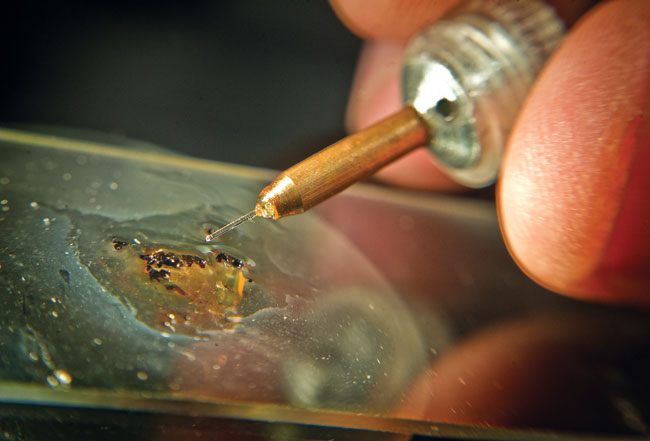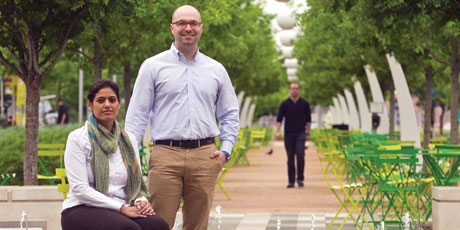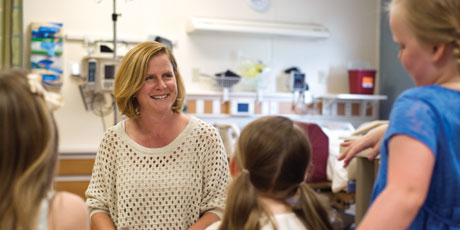Binder
Putting the Pieces Together
Chemist using National Science Foundation grant to examine the relationship between small molecules and metal ions

Understanding how metals interact with organic compounds could help scientists create better textiles, plastics, anti-freezes, and even prescription drugs.
Distinguished Professor Rasika Dias received a three-year, $450,000 grant from the National Science Foundation to explore how metal ions like gold and silver bind with small molecules like carbon monoxide, acetylenes, and ethylene.
“Metal ions are essential for our existence. Natural processes like nitrogen fixation and photosynthesis depend on them, but they also play a key role in numerous industrial processes,” explains Dr. Dias, who is also chairman of the Department of Chemistry and Biochemistry. “What we are trying to do is to understand how certain metals act as catalysts and create a lower energy pathway for bond-breaking and bond-making to occur.”
With that new knowledge, scientists could improve existing chemical processes, which might help them obtain product yields under milder conditions. The research may even uncover a way to direct chemical reactions to a completely new pathway. That could lead to more useful products and molecules, such as pyrroles and furans, which are important to the pharmaceutical industry.

















